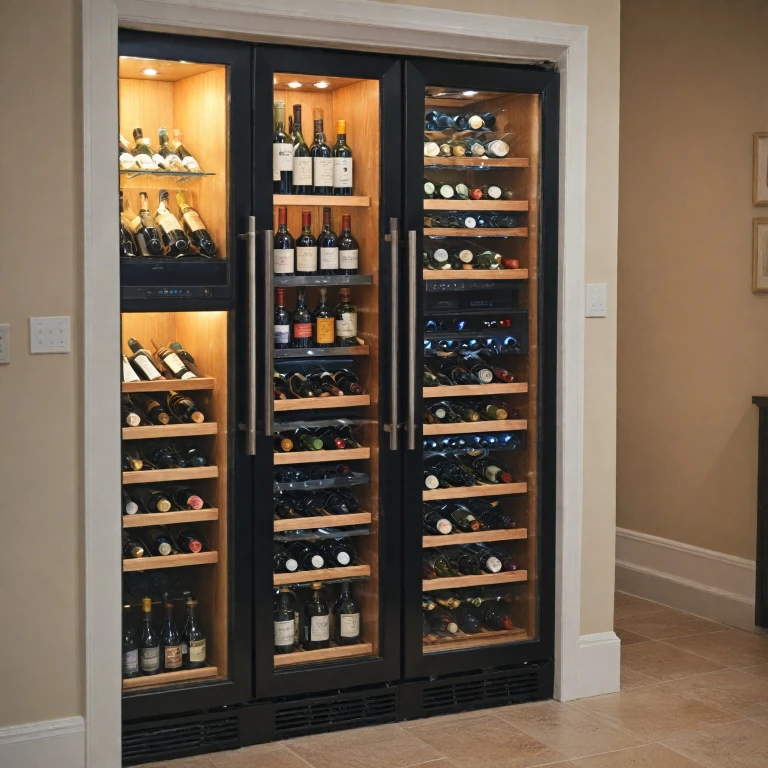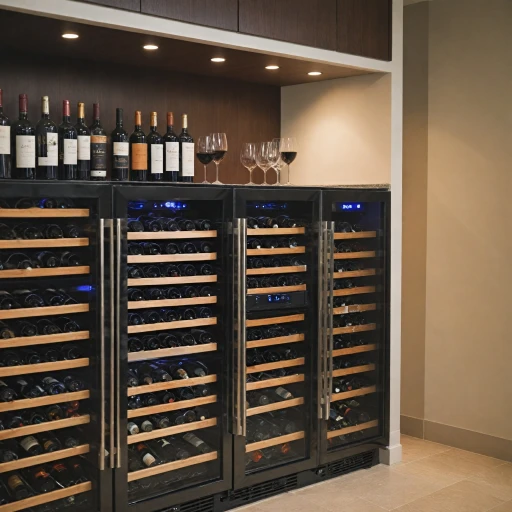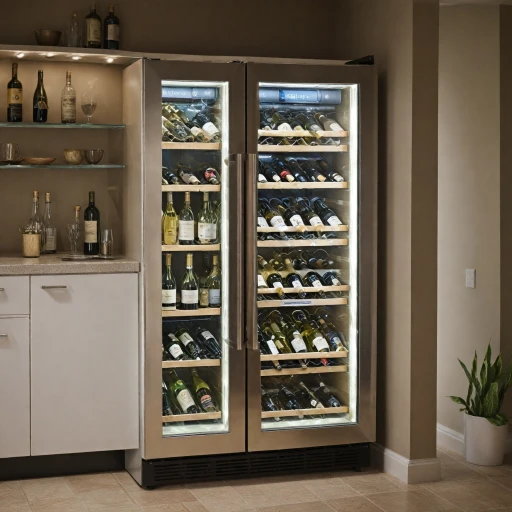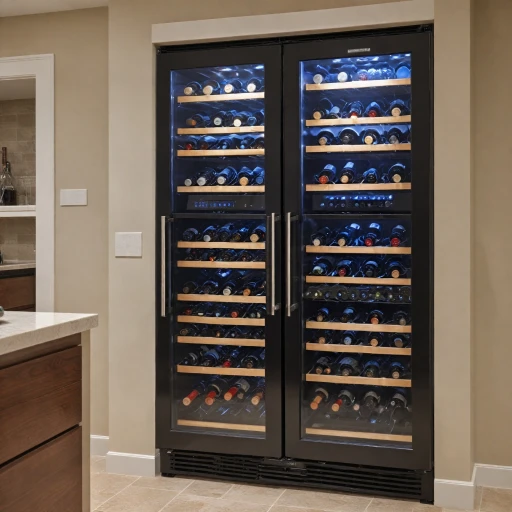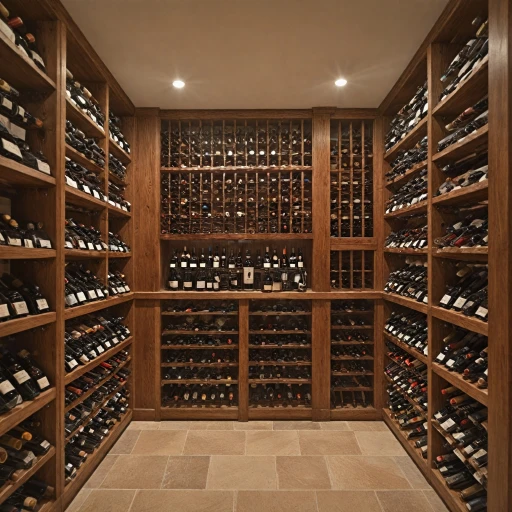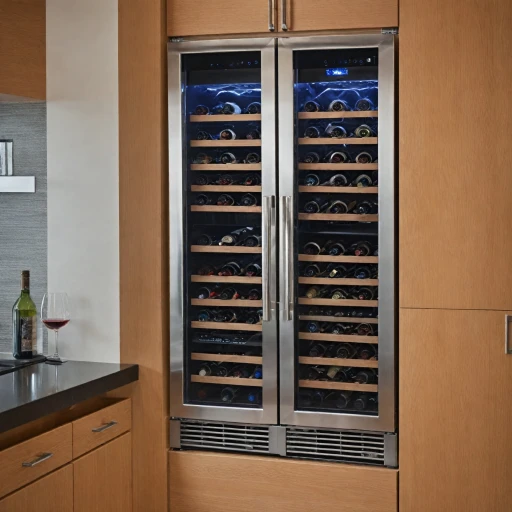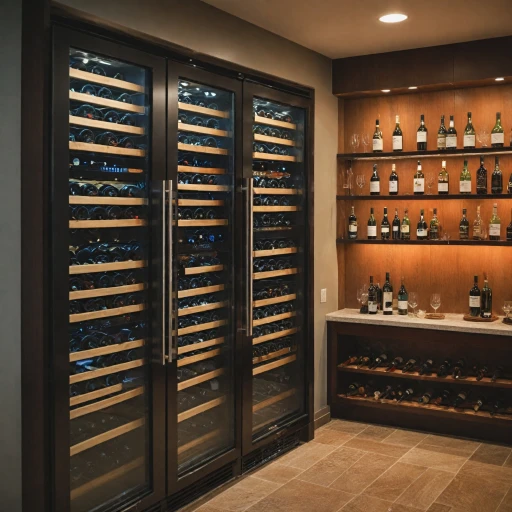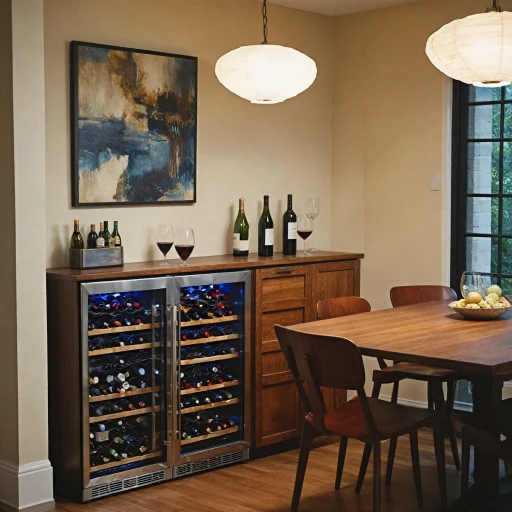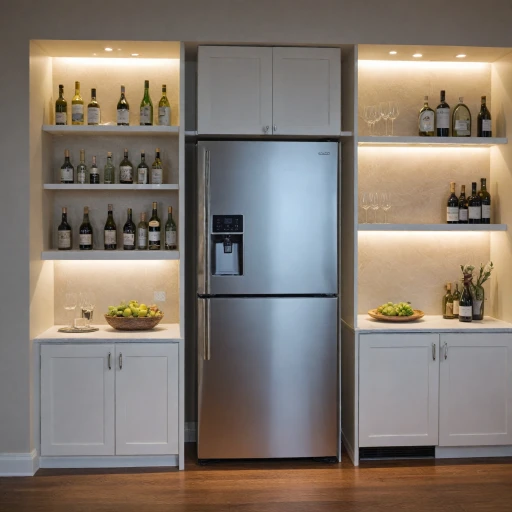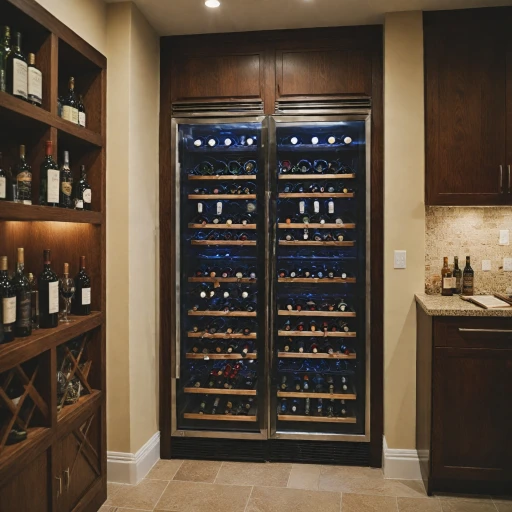
Understanding Wine Storage Basics
Basics of Wine Storage Thoughtfully Considered
Storing wine is a delicate process that involves careful attention to various factors. To maintain the integrity and flavor of your wines, it's essential to understand the fundamentals of wine storage. One of the key elements to consider is temperature. For anyone wondering about the best temperature to store wine, it's crucial to recognize that too much warmth or cold can harm your precious collection. Wine refrigerators or coolers, such as single or dual zone units, come in handy to ensure the proper storage environment. Wine storage temperatures should neither be too warm nor too chilly to preserve the flavor profiles. Storing wines at room temperature or extreme temperatures could have adverse effects on the quality. Instead, consider using a wine fridge that can maintain a suitable temperature range. The method of storage also differs based on the type of wine. For example, a freestanding wine cooler might serve well for short-term storage but might not be the best for long-term preservation. Hence, selecting the right wine refrigerator is vital. Understanding these basic principles of wine storage sets the foundation for appreciating wine at its best. To delve deeper into optimal storage methods, including humidity control, and to ensure you're getting the most out of your bottled collection, it's worthwhile exploring further resources on temperature settings. Discover more about optimal temperature settings for white wine in your wine cooler to enhance your wine storage strategy.The Science Behind Wine Temperature
Grasping the Science of Wine Temperature
Understanding the proper temperature is crucial for wine enthusiasts and collectors aiming to maintain the integrity of their prized bottles. Wine, whether red, white, or sparkling, contains complex chemical compounds that react vigorously to shifts in climate. The ideal wine storage temperature ensures these reactions are slow, preserving the wine's intended flavors and aromas.
When it comes to temperature, wines are sensitive. They thrive in a stable environment, making a wine cooler or wine refrigerator essential for optimal storage. A dual zone refrigerator offers the flexibility to cater to different varietals. For instance:
- Red wine typically fares best in a warmer zone, typically between 55-65°F.
- White wine generally prefers cooler climates, around 45-55°F.
- Sparkling wines and champagnes usually need the coolest treatment, often below 45°F.
Maintaining these environments hinders spoilage and encourages the wine to age as expected. The chemistry of wine factors into these storage considerations. For example, tannins in red wines soften over time, and too much heat accelerates this unjustly. Conversely, storing reds in the fridge for too long may freeze those very tannins, unbalancing the wine. Mastering the ideal conditions for wines is about recognizing and working with these chemical nuances.
Thus, whether you possess a single zone fridge for a particular type of wine or engage a more versatile approach with zone wine coolers, respecting their unique temperature needs enhances every bottle's potential, ensuring each sip is as intended by the winemaker.
Ideal Temperature Ranges for Different Wines
Appropriate Temperature Ranges for Various Wines
Storing wine at the correct temperature is essential to preserve its flavor and aroma. Understanding the ideal temperature range for different types of wines can significantly enhance your wine storage experience.
Red Wines
Red wines, often enjoyed at room temperature, require slightly cooler conditions for optimal storage. A temperature range between 55°F to 65°F (13°C to 18°C) is deemed suitable for preserving their tannins and complex flavors. Using a single-zone wine fridge is an excellent choice for collectors of predominantly red wines.
White Wines
White wines benefit from a cooler environment. Typically, these wines should be stored at temperatures ranging from 45°F to 50°F (7°C to 10°C). This cooler setting helps retain their freshness and crisp taste. Wine refrigerators designed as dual zone units are ideal for enthusiasts who relish both red and white wines, as they allow different settings within the same cooler.
Sparkling Wines
Sparkling wines, including champagne, generally require even cooler storage conditions. A temperature range between 40°F to 45°F (4°C to 7°C) is recommended. Opting for a wine cooler that can accommodate these temperatures ensures that the effervescence and delicate nuances of sparkling wines are maintained.
By investing in the best wine fridges, whether freestanding or built to fit a 24-inch space, you can create a perfect environment to keep wine at its optimal storage temperature, improving your overall wine enjoyment.
Common Mistakes in Wine Storage
Missteps to Avoid in Wine Storage
When it comes to properly storing and serving wine, avoiding common mistakes is essential. A frequent error is assuming that all wines can be stored or served at the same temperature. This misconception can negatively affect the taste and longevity of your wine. One of the biggest pitfalls is storing wine at room temperature. While it might seem convenient, this can degrade the wine over time, especially if temperature fluctuations are significant. Instead, it's best to maintain wine at a consistent temperature in a dedicated wine fridge. Choosing the wrong type of refrigerator can also be detrimental. There are key differences between standard refrigerators and wine coolers. Standard fridges are not designed for optimal wine storage, as they often vibrate and fail to maintain suitable humidity levels. A wine cellar or a freestanding wine cooler, whether it's a single or dual zone model, provides a stable environment crucial for aging wine properly. Another common mistake is setting the incorrect temperature range for different wines. It's vital to distinguish between red and white wines when adjusting your refrigerator settings. Red wines generally thrive in a cooler temperature zone compared to whites, which require a slightly warmer setting. This allows both types of wine to be served at their best. Properly organizing your wine is another crucial aspect. Avoid overcrowding your fridge, which can obstruct air flow and lead to fluctuating temperatures. Store your wine bottles horizontally if possible, keeping corks moist and preventing any air from seeping in. By paying attention to these potential missteps in wine storage and ensuring you're using the appropriate refrigerator settings, you can keep wine at its ideal serving temperature for an optimal tasting experience. Avoid these common mistakes to ensure your wine retains its quality and enjoyment factor over the long term.Choosing the Right Wine Fridge
Selecting the Perfect Wine Fridge for Your Collection
When it comes to housing your wine collection, finding the right wine fridge is essential. This crucial piece of equipment ensures your wines are stored at the optimal temperature range, preserving their flavor and quality. Here’s a practical guide to help you decide on the best wine cooler for your needs:- Size and Capacity: Start by evaluating the size of your collection. Wine fridges come in various capacities, measured in bottle count. From a compact 12-bottle unit to larger models that can house over a hundred bottles, your choice should align with your current collection and any potential growth.
- Type of Wine Collection: Consider the types of wines you typically store. If your collection includes both red and white wines, or even sparkling varieties, a dual zone wine fridge might be your best option. These units let you set two different temperature ranges to accommodate varying serving temperatures.
- Wine Fridge Design: Decide between a freestanding unit or a built-in model. Freestanding wine coolers can be placed anywhere with enough ventilation space, while built-in wine fridges are designed to fit seamlessly in kitchen cabinetry.
- Cooling Zones: Think about whether you prefer a single zone or a dual zone fridge. A single zone wine fridge maintains one consistent temperature throughout and is ideal for collectors of predominantly one type of wine. Dual zone coolers, on the other hand, will cater to those who keep both reds and whites, ensuring each is stored at its ideal temperature.
- Climate and Energy Efficiency: Modern wine refrigerators often come with energy-efficient features and climate controls which not only minimize energy costs but also keep the temperature consistent. Some models even offer humidity control, a crucial factor for long-term wine storage.
Tips for Maintaining Your Wine Fridge
Maintaining Your Wine Storage Wonderland
Owning a wine fridge or cooler is not just about setting it up and forgetting it. Regular maintenance is essential to ensure your wines are stored at their optimal serving temperature and to extend the life of your storage appliance. Here are some practical tips:
- Consistent Monitoring: Regularly check the temperature settings of your wine refrigerator to ensure they stay within the recommended range for the type of wines you store. Remember, red and white wines might require different settings, especially in a dual zone wine cooler.
- Cleaning the Interior: Periodically, clean the shelves and inner walls. Dust and residues can alter the flavor of your wines over time, so maintaining a clean storage environment is crucial.
- Check the Ventilation: Make sure the vents are not blocked. Proper airflow is necessary for keeping the temperature stable within the wine fridge, particularly in freestanding models.
- Seal Check: Inspect the door seals for any signs of wear or damage. A proper seal keeps the cool air in and external heat out, safeguarding your bottles at the correct temperature range.
- Annual Servicing: Even the best wine coolers require annual servicing. This can prevent any long-term issues and keep your cooler running efficiently.
Implementing these maintenance practices not only enhances the performance of your wine fridge but also ensures each bottle is kept in its prime condition, ready for that perfect moment of serving.

